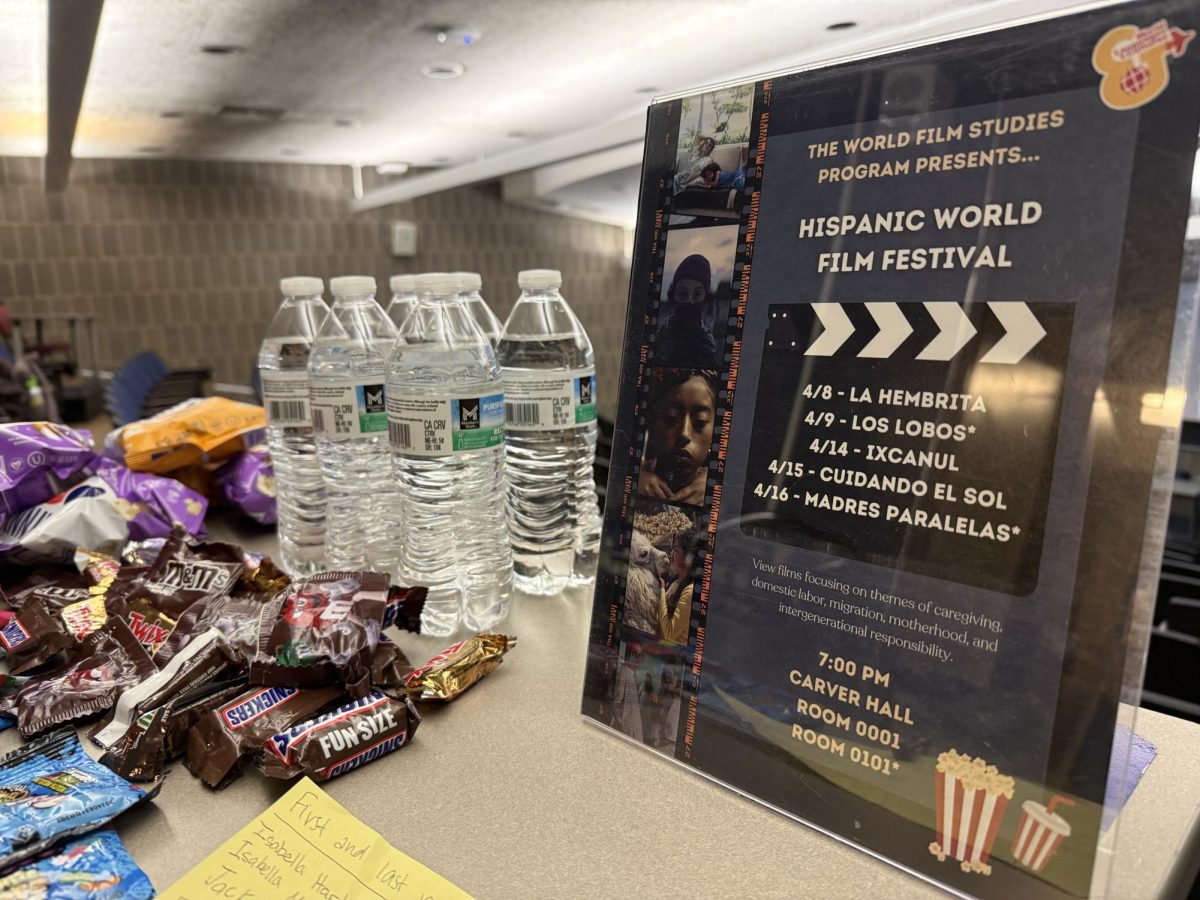Synthetic drug abuse a danger in multiple ways
March 30, 2015
Most people know about marijuana, cocaine and heroine, but what about synthetic drugs?
Linda Kalin, executive director of the Iowa Poison Control Center, discussed synthetic drug abuse in the Great Hall of the Memorial Union on Monday night.
“It’s a chemical game of whack-a-mole,” Kalin, an expert on clinical toxicology, said, discussing how synthetic drugs, like “K2” and other “fake pot” products, otherwise known as synthetic marijuana, are constantly changing to avoid being banned.
The chemical originally used in these fake marijuana products was created in a lab by scientist Dr. John Huffman, who made the compound for research purposes. Kalin said after he published his work, people began using the compound recreationally as a drug.
Kalin said synthetic marijuana is made by taking powder form, man-made cannabinoid substances and dissolving them in a solvent, such as acetone. The mixture is then sprayed on plant material, to give the impression of organic origin.
The negative effects of synthetic marijuana are far more numerous than with its natural counterpart, Kalin said. The chemicals latch on to brain cells much more effectively, so they have a more potent effect than regular marijuana.
Additionally, the packaging for synthetic marijuana is often labeled as incense or plant fertilizer, to deter suspicion of its true purpose. The packaging usually does not have any labels saying what chemicals are in the product. This means people who consume the drugs do not know what they are putting in their bodies.
The threat of overdose is significantly higher in synthetic drugs. This can be blamed, Kalin said, on the lack of truthful information on packaging.
Kalin said synthetic drugs come in many different forms. Examples other than synthetic marijuana include bath salts, molly, sextasy and other drugs that are not naturally derived.
Kalin made a point of telling the crowd she does not condone any drug use and said naturally derived drugs like opioids, meth, marijuana and cocaine should be avoided along with synthetic drugs.
Lecture attendees had their own thoughts on synthetic drugs.
“I think it’s relevant for us [college students] right now,” said Cady Wendel, freshman in family and consumer science education and studies, on why discussion of drug abuse is important.
Members of the crowd were able to ask questions to Kalin concerning the lecture topic.
“How do these companies get away with selling these drugs?” asked one woman. Kalin responded by saying the drugs’ chemicals keep changing and their sale on the Internet from abroad makes it hard for authorities to keep them out of the country.
Kalin also took time to explain the risks of alcohol abuse. She said when someone passes out, the best thing to do is to take that person to the emergency room.
“Their blood alcohol content can still rise and peak while passed out and they may stop breathing,” Kalin said.
Additionally, Kalin said there was risk of caffeine overdose by way of 100 percent pure caffeine powder. This amount and form of the common stimulant in coffee can be fatal.
“A lot of students don’t know trying new things can be harmful,” said Garron Stratton, senior in interdisciplinary studies. “Drug education also helps kids know what they’re putting into their bodies.
“Thrills and Pills that Kill” was sponsored by the ISU Health Promotion Club, Story County Prevention Policy Board, kinesiology department, city of Ames Mayor’s Youth Committee, Theta Chi Fraternity and the Committee on Lectures.






